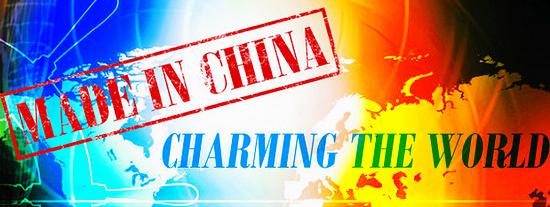M WAQAR..... "A man's ethical behavior should be based effectually on sympathy, education, and social ties; no religious basis is necessary.Man would indeed be in a poor way if he had to be restrained by fear of punishment and hope of reward after death." --Albert Einstein !!! NEWS,ARTICLES,EDITORIALS,MUSIC... Ze chi pe mayeen yum da agha pukhtunistan de.....(Liberal,Progressive,Secular World.)''Secularism is not against religion; it is the message of humanity.'' تل ده وی پثتونستآن
Monday, December 24, 2012
'Made in China': A Christmas gift
American fellows, it is Christmas time, a time to wake up, have a strong cup of coffee, and see what gifts a Chinese Santa Claus really delivers.
Each Christmas morning, when you open your sleepy eyes, the presents that light you up most probably bear a "Made in China" label.
However, facing a declining economic growth, ballooning deficit and looming "fiscal cliff", the Christmas season in the United States this year seems particularly chilly.
Amid the current economic chill, some major American media outlets recently called on the American people to boycott the "Made in China Christmas gift" and revive the "Made in America Christmas".
They spoke negatively about the quality of Chinese-made products and said "Made in China" has been controlling the American people and big businesses.
The first high-level trade talks between China and the United States since both countries underwent leadership transitions just concluded last week. The world's two largest economies and each other's second-largest trading partners expressed their willingness to resolve trade disputes and enhance win-win cooperation during the high-level talks.
It is time to let the truth do the talking. Our American fellows deserve to know the truth, the stinging truth about how the ubiquitous "Made in China" has helped the US economy.
"'Made in China' not only won't hurt our businesses, but bring them opportunities instead," said John Duggan, an American attorney and long-time China watcher.
"Made in China", with its fine quality and low price, has greatly improved the purchasing power of the American people. This was especially evident after the global financial crisis.
During the financial winter, the number of one dollar stores sprang up. Among those in these shops, "Made in China" products accounted for a large percent.
Based on Morgan Stanley's research report, in 2009 alone, approximately $100 billion in US consumer spending was saved by the "Chinese imports".
Capitalizing on China's low costs of labor and raw material, American corporations managed to have their products manufactured in the large populated developing country, and sell them back to the tasteful US consumers with a handsome price.
This huge "Chinese dividend" led a wealth of American companies to make investment in their manufacturing bases in China. As of today, China has attracted over 480 companies of the Fortune Global 500 to invest in this burgeoning economy.
With China's cooperation and participation, American corporations have found a sustained growth engine and witnessed increased share of wealth.
While "Made in China" has greatly benefited both the average Americans and big US businesses, what frequently appeared in the American mainstream media were mainly the exaggerated quality issues of Chinese-made products. The bitter side of "Made in China" has remained unmentioned.
From day one, it was the Western developed countries who got the credit, and China that did the dirty work.
The majority of the "Made in China" goods are just original equipment manufacturer (OEM) products. China has merely served as an agent factory of the Western developed countries.
According to a recent report by the People's Daily newspaper, OEM products take up about 90 percent of China's exported goods. At present, less than 3 percent of global brands accounts for about 50 percent of the total global sales, and 90 percent of these well-known brands belong to the developed countries and emerging industrialized countries and regions in Asia-Pacific region.
"Made in China" has long been at the low end of the global value chain. The world famous Barbie dolls sold in more than 100 countries were mainly manufactured in China. For each Barbie sold in America for $9.9, there is merely $0.35 left to her Chinese "mother" for labor, plant & equipment and electricity.
Moreover, those heavy industries, which are detrimental to the environment, were gradually moved to China. The developing country not only consumed its energy resources and damaged its environment, but was also demanded by some developed countries to bear the task of energy conservation and emission reduction beyond its carrying capacity.
Behind China's manufacturing bonanza, few noticed what a huge sacrifice the world's second-largest economy has made, and how much pain it has taken to get this far.
Behind the "Made in America" slogan, hardly any Americans questioned how much politics is involved. The Obama administration's alleged plan to "revive American manufacturing" is simply a political advertising during the American election season, since America does not enjoy any advantages in low-end, labor-intensive manufacturing. The country's real edges are in the high-end, knowledge-intensive sectors.
In addition, with the rising trend of global economic integration, "Made in China", to some extent, has evolved to "Made with China". Many of the products labeled "Made in China" are not necessarily Chinese products, but American-brand merchandises. The economic globalization has made Chinese and US businesses better integrated.
This Christmas morning, when you wake up and smell this couple of coffee, accept your gifts with gratitude.


No comments:
Post a Comment